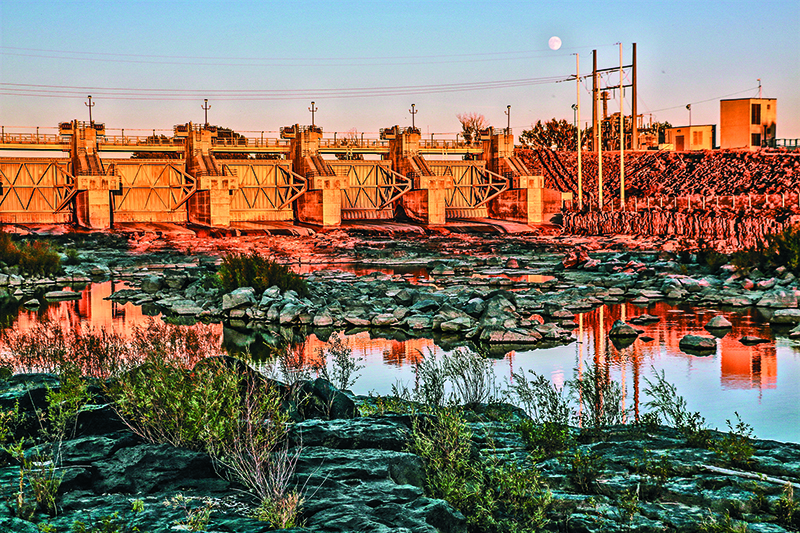
There’s the pond for fishing and birding, the channels for boating and swimming, the trails for biking and walking. All of these assets add value to the community and they are all made possible by power plants in the Snake River keeping the lights on in Idaho Falls.
“We have a tremendous asset in our community that really is accessible for everybody and should be used by everyone,” says Jackie Flowers, Idaho Falls Power general manager. “We have a lot of pride in the investments we put in and we look forward to continuing to maintain that legacy going forward.”
The legacy includes two $48 million bonds that funded the construction of four hydropower plants for Idaho Falls Power. The bonds are now paid off and the city continues to reap the rewards of a commitment made with water and watts in mind.
The Payment Plan
Kevin Getsinger started working for Idaho Falls Power in 1979. His job was at risk from the get-go because of a flood. The Teton Dam broke in 1976 flooding the downstream system and damaging Idaho Falls Power’s equipment.
“They were thinking about discontinuing generation in the city electric department altogether after the Teton flood,” says Kevin Getsinger, Idaho Falls Power generation foreman. “If they had not passed the bonds and built the power plants, I wouldn’t have had a job.”
Idaho Falls decided to aggressively pursue bonds. Two of them. One in 1978 for $48 million and a second one in 1984 for another $48 million.
“I can remember signing those bonds,” says Tom Campbell, former Idaho Falls mayor. “It just seemed like a tremendous amount of money. It still is a lot of money.”
Overwhelming support by voters, showed the community’s sincere desire to have a local utility in a time when everything seemed to be getting more expensive.
“It captured the people’s imagination. Power was going up. Everything was going up. It was an inflationary time and it just sold really well,” Campbell says. “It’s a community where people have food storage and savings accounts and they understand it’s important to be prepared. This was a city preparing like an individual citizen because we were going to have our own power.”
The Power Plants
That power kept Getsinger employed. The bonds paid for the construction of four hydropower plants in the Snake River as it runs through Idaho Falls.
The plants are considered run-of-the-river hydropower plants. Instead of damming the river and creating a waterfall to turn the turbines that generate power, the turbines are on the river bottom so the current creates the turning action and the river isn’t stopped.
“The system we have today really is a fantastic success story for the community,” Flowers says. “When you think about, today, how hard it is to invest in infrastructure and how hard it is to get folks to agree on what the priorities should be, those [plants] are significant accomplishments. It’s something that the community can really be proud of.”
The Payoff Period
Getsinger is proud of the project as he stands on top of the Gem State hydropower plant south of town. It’s maintenance season for Idaho Falls Power and he’s overseeing a crew that is greasing axles, welding panels and checking charges.
Everything they are maintaining is now paid off. The city made its final bond payment in March. Idaho Falls Power is debt free. Through decades of passing bonds, building plants and final payoff, Getsinger kept his job.
“When I first started with Idaho Falls Power, I never would have imagined I would be here for that long, but time flies when you’re having fun,” Getsinger says. “It’s a very satisfying and fun job and it really doesn’t seem like it was that long ago.”
Jackie wasn’t in Idaho Falls when Campbell signed those bonds, but she’s realizing the benefits of that era’s commitment now and she makes a point of recognizing the dedication to local power made so long ago in Idaho Falls.
“I really think we have to pay tribute to those leaders that had the foresight to have that vision and the resolve to have the conversation with the community, work through challenges and see the project through to completion,” Flowers says. “These projects really will be the backbone to our utility for decades to come.”
Millgate is a freelance writer based in Idaho Falls. She is also editor of our sister publication East Idaho Outdoors.